Cavenham Crowns
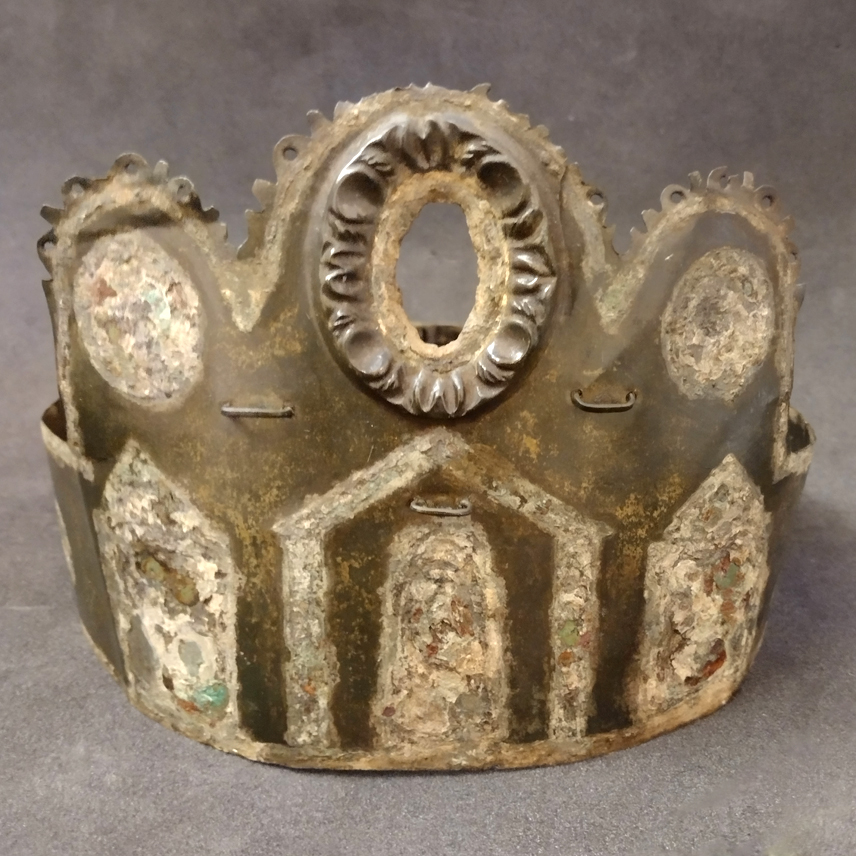
In the early 1920s, two bronze crowns and a ceremonial head-dress were discovered on Cavenham Heath in Suffolk. Shortly after, these were purchased by Nina Layard who first wrote about them in the Antiquaries Journal in 1925. [1] Whilst there is some speculation regarding exactly where they were discovered as the topographical description given bears a closer resemblance to either Mill Heath or the field with the cemetery than Cavenham Heath, there’s no doubting their splendour. [2]
Beside the ‘Cavenham Crowns’ as they have since been coined, was a bronze feather believed to have been part of the head-dress ornamentation. Along with roof tiles and animal remains the material culture recovered indicates a Romano British settlement dating from the 1-4th century. The intact crowns are believed to have been ritually buried and are presumed to have been owned by either a priest or priestess [3] and are dated to the start of the settlement phase 1-2nd century. [4] At this time the Roman author Pliny the Elder described Britain as being “still spell-bound by magic” and continuing to perform “its rites with so much ritual.” [5]
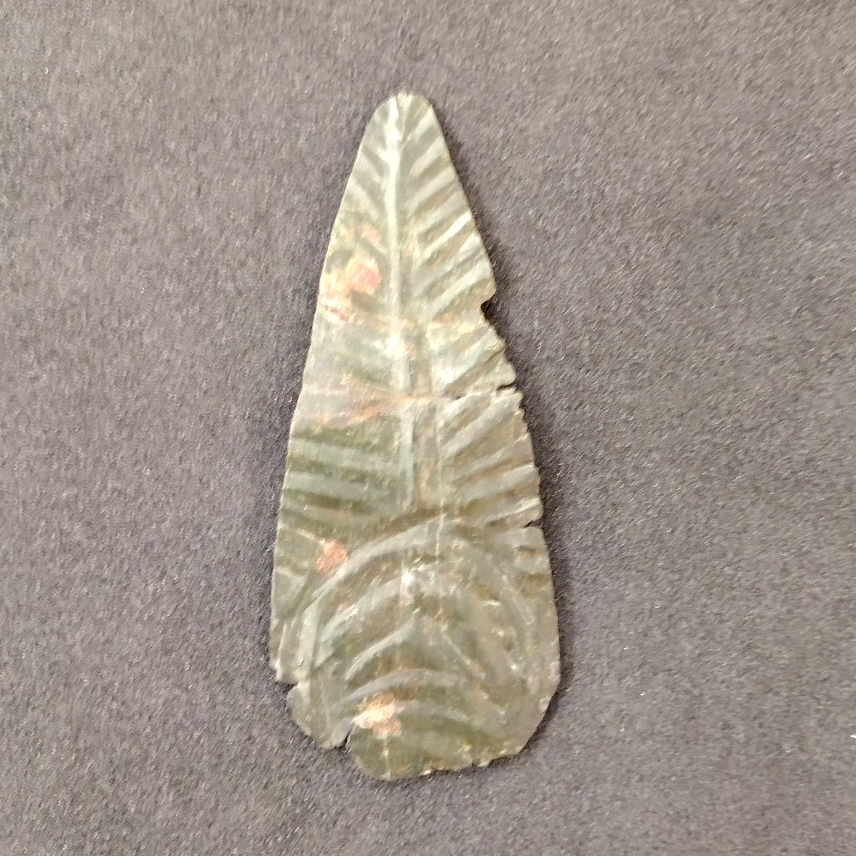
The design of the crowns is a fusion of Celtic and Roman religions “adding to growing evidence of a pagan revival at a time when Christianity was dominant in Britain.” [6] The largest of the crowns is 14cm in height at the front, tapering down to 4cm towards the back of the headband, and is made from one single sheet of bronze, whilst the smaller one at 11cm in height has the headband joined by means of a solder. [7] A niche-like scar in the centre at the front of the largest crown suggests the shape of a figure, as indicated by the remaining solder. [8] Two other niches flank the central figure, and it is thought that originally these bright golden coloured crowns would have been adorned with silver decorative plaques depicting Romano British deities and would have been inlaid with gems or glass. [9] As for the identity of the three plaques on the front, we can only wonder.
The bronze head-dress was made of 8 metal chains that are formed out of S shaped chain links that connect to 5 bronze discs, forming a kind of rhombus. It was designed to fit the head and may have once been placed over a leather cap with the slightly larger central ‘sun disc’ at 6.35cm positioned on the top of the head. The other 4 being positioned over each ear, the back of the head and the forehead. All 5 discs have serrated edges and are ornamented with holes punched in the centre and raised circular lines. [10]
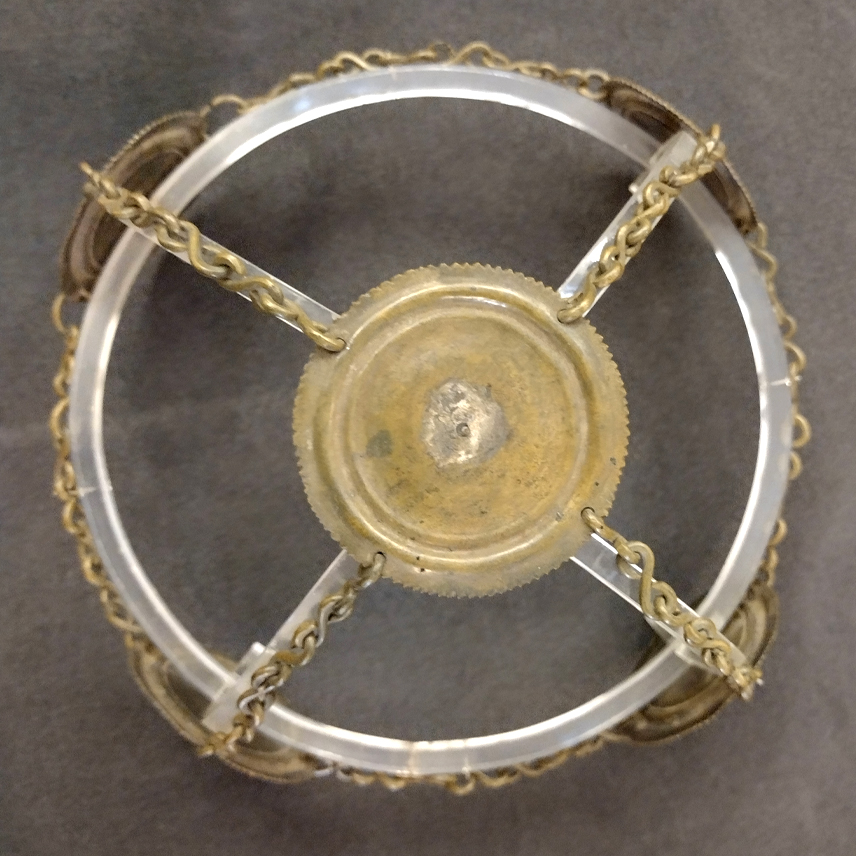
For thousands of years circles have long been symbolic representations of the sun. Whilst the chain on the Cavenham head-dress was functional, the use of the S shape integral to its design also assured further solar affiliations. Such S shapes were used to replicate solar imagery thought to denote the sun’s rays and are a consistent feature on many Romano-Celtic artifacts. [11]
Appropriating the spirits controlling the Sun was central to the cult of the Unconquered Sun, that originated in Syria and was closely associated with Mithraism, and became increasingly popular during the 3rd century under the reign of Emperor Aurelian. [12] As late as 312 AD, coins were still being commissioned depicting Sol Invictus which with the increasing popularity of Christianity were later replaced by Christ, [13] the great solar-god, hence Sun-day (Sunday) as the religious day of rest. [14]
The Cavenham Crowns are currently out of sunlight and in storage in Ipswich Museum.
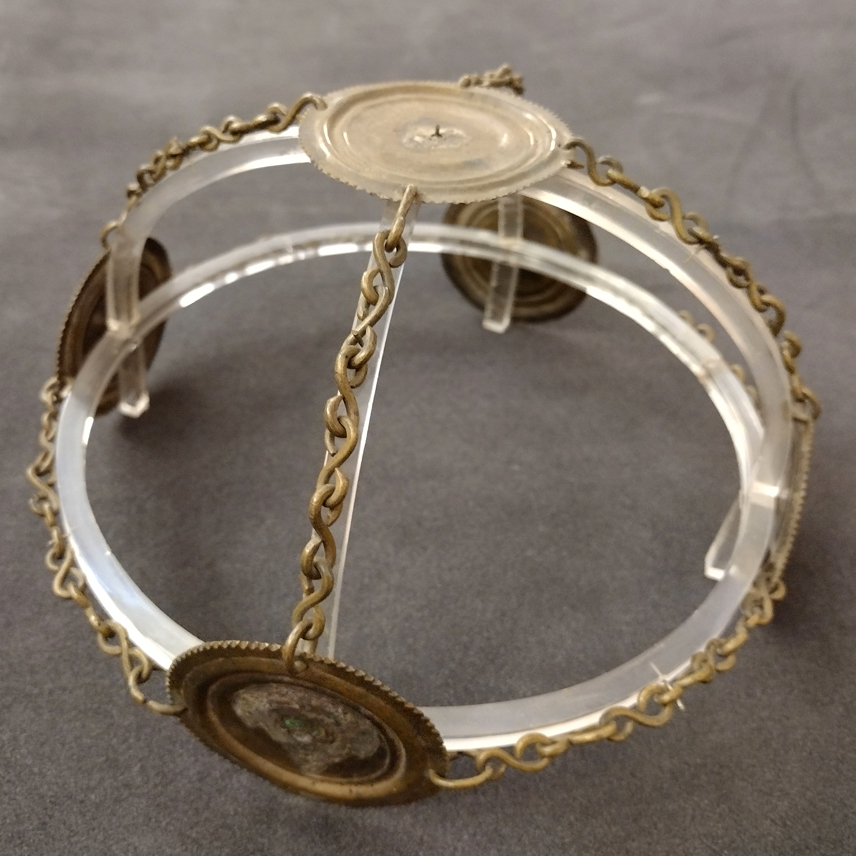
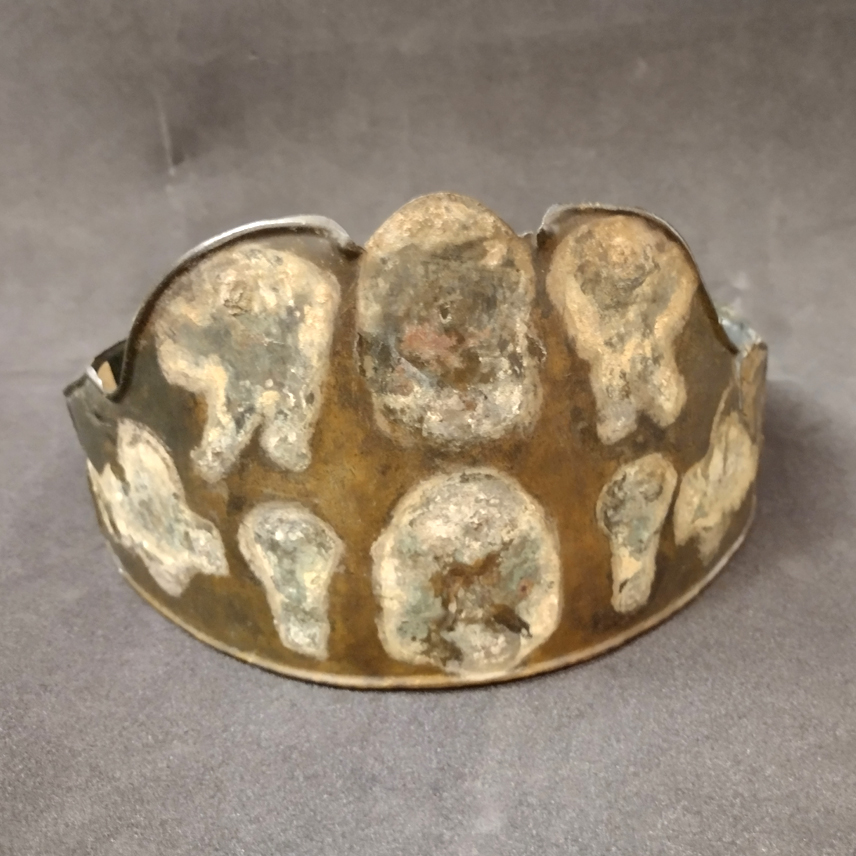
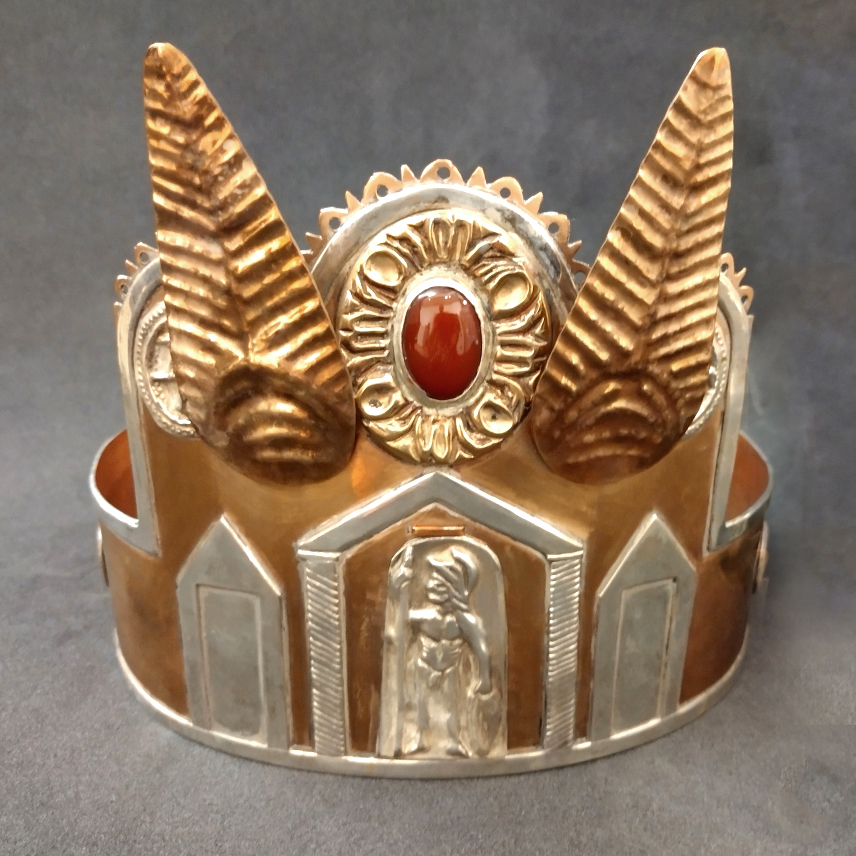
References
- Layard, N. (1925) The Antiquaries Journal. Bronze Crowns and a Brown Head-dress, from a Roman site at Cavenham Heath, Suffolk.
- CAM 095. Poorly located find spot record – Roman crown, Cavenham Heath; Mill Heath https://heritage.suffolk.gov.uk/Monument/MSF10448 and Heritage Gateway. Historic England Research Records – Lackford
https://www.heritagegateway.org.uk/Gateway/Results_Single.aspx?uid=379950&resourceID=19191 - Moss, R. (2019) This ancient priest’s crown is a fusion of Roman and Celtic religions.
https://museumcrush.org/this-ancient-priests-crown-is-a-fusion-of-roman-and-celtic-religions/ - Esposito, A. (2015) A Context for Roman Priestly Regalia: Depositional Practices and Spatial Distribution of Assemblages from Roman Britain. Theoretical Roman Archaeology Journal 2015
- After Chadwick, N. (1997) Pliny the Elder, Natural History. Druids. University of Wales Press
- Moss, R. (Ibid)
- Layard, N. (Ibid)
- Layard, N. (Ibid)
- Uniacke, J and Brownie, S. (2000) Cavenham Parish. Cavenham Crowns. http://www.cavenham-parish.co.uk/index.asp?pageid=711256
- Layard, N. (Ibid)
- Green, M.J. (1991) The Sun-Gods of Ancient Europe. Batsford, London
- Aldhouse-Green, M. (2018) Sacred Britannia: The Gods and Rituals of Roman Britain. Thames & Hudson, London
- Aldhouse-Green, M. (Ibid)
- Ferguson, J. (1970) The Religions of the Roman Empire. Thames & Hudson, London
